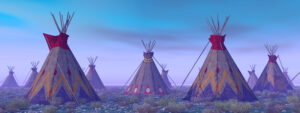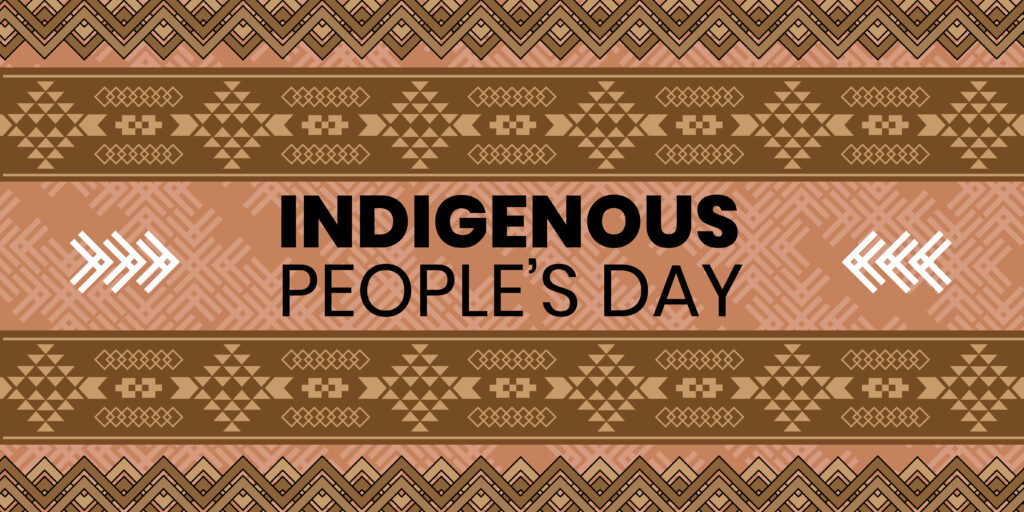National Indigenous History Month

National Indigenous History Month
AUTHOR: SHERRY WOODS
Who? First Nations, Metis and Inuit People of Canada
What? A month of Indigenous events and learning.
Where? Across Canada (Turtle Island)
When? The full month of June (Indigenous History Month), and June 21st (Indigenous People’s Day)
Why? In June, we commemorate National Indigenous History Month. During this month, take time to recognize the rich history, heritage, resilience and diversity of First Nations, Inuit and Métis Peoples across Canada.
Introduction:
Oki (Hello), my name is Sherry Woods. I am from Siksika Nation which is a part of the Siksikaitsitapi (Blackfoot Confederacy). We derive of 4 nations, Kainai, Siksika, Peigan-Piikani and Aamskapi Pikuni. In my tribe we are very close-knit, everyone knows each other or knows your family. It is normal to ask questions such as “Who is your family?” or “Who is your mom and dad?” and that is an example of how we relate back to our clan systems. My people have been here for time immemorial, and they have been the caretakers of the land. They have old stories, songs and ceremonies that are still here today, and I am on a journey to learn more about everything that makes me, me.
This article you are about to read is from my perspective as a Siksika woman. I am the first generation to not attend a residential school or a day school, but these places have had a long-lasting impact on my people. I too am still learning about our history, because it wasn’t taught in school and my parents never talked to me about it. I remember only learning about the “good” things Canada has done for my people and, like the rest of society, I was conditioned to not being fully aware of the issues in the past. It was a very taboo topic. As I got older, I started digging more into my own history and asking myself “Why was I so angry all the time?”, “Why was I angry at my parents and grandparents?”, “Why did I feel ashamed to be Native?”, and why did people around me talk about Natives like we were a nuisance on earth? I was confused about my identity and didn’t understand why I couldn’t speak my language and knew very little about my culture. Until one day my grandfather sat me down and told me his story. It was painful to hear, because how could such a strong man go through all that? He helped to raise so many Indigenous kids on our reserve, fought against the system in order to keep the kids in the community. He knew they needed to be home with our people and although these families were broken and lost, he still followed our old ways of helping each other out. One thing that stuck with me is when he said “My girl, the reason I didn’t teach you our language was because I didn’t want what happened to me, to happen to you. I was afraid they were going to take you as well”. This mindset was passed down through generations and severely affected our Indigenous systems and worldview. Today Indigenous people are going back to culture and learning ways to cope, heal and be healthy again. We have been damaged by generations of oppression, but we are not broken. I am still here today because my ancestors survived.
Indigenous History in Canada
Canada you have committed cultural genocide
— Justice Murray Sinclair, Chair of the Truth and Reconciliation Commission of Canada
History books were written by European settlers and always from a Western point of view. Indigenous people have been excluded, ignored, and neglected from this country’s history. They have always been deemed as “savages”, but in order to truly understand Canada’s history all Canadians will need to understand and consider things from the Indigenous perspectives. Indigenous worldviews have continuously been marginalized and their histories are just as important to tell, and they have been on these lands for time and immemorial. In order not to repeat history, society needs to face the truth of how Canada became a country. It was not pretty; it was dark and cruel to a whole group of people who were almost eradicated from their homelands and repressed onto reservations across Canada. The government set Indigenous people up to fail. They have fallen through the system so many times, including the child welfare systems. Parenting practices were violently disrupted by residential schools, addiction and suicide rates are now high in communities, and poverty rates are high due to the lasting damage from these schools. Indigenous people have paid a heavy price due to colonization. Culture and language were stripped from them in the residential schools across Canada in order to assimilate them into Western culture.
NAMWAYUT: WE ARE ALL ONE.
Canada is the only western country to have a Truth and Reconciliation Commission. So, we are trying to look through a new lens, we and Canadians, we as an Aboriginal, we celebrate each other. Everybody cheering each other up, as we move towards a more equal, prosperous future for all of us.
— Chief Robert Joseph of the kwikwasut'inuxw haxwa'mis Nation
The first Prime Minister of Canada Sir John A Macdonald was the architect behind creating the Indian Act in 1876, which impacted Indigenous people immensely. It is a set of political policies that controlled and aimed to assimilate Indigenous people.
The great aim of our legislation has been to do away with the tribal system and assimilate the Indian people in all respects with the other inhabitants of the Dominion as speedily as they are fit to change.
— John A Macdonald, 1887
The “relationship” between the Crown and the Indigenous people has been rocky since first contact with European settlers, and many of the treaties that were signed have been broken by the government.
For Indigenous people in Canada, compared to the rest of the population:
- Indigenous people are overrepresented in both the Canadian justice system and in the children’s welfare system.
- Homes are often flimsy, leaky, and overcrowded.
- Water and sanitation systems are more often inadequate
- There are fewer jobs
- More spend time in jails and prisons
- Life expectancy is lower
- Illness is more common
- Social problems, from family violence to alcohol abuse are more common too.
- Suicide rates are 5 times higher than the general population. Among Inuit suicide rates are 11 times higher than the rest of Canadians. (UofT, BMC Public Health).
Why is it important for Indigenous people to tell their own history / stories?
There is a stereotypical lens that the Western world has given Indigenous people throughout history, such as the “savage” that is ready to attack settlers. Indigenous representation has not been fair or accurate. Indigenous history has always been told from the settler perspective. It’s important for Indigenous people to tell their own stories, they make us human, and they are how we pass on culture, language, and ways of life. Indigenous worldviews are just as valid and important because that worldview sustained their lives for many centuries.
Canada has put an umbrella term on Indigenous people, there are over 600 tribes in Canada who self-identify as their tribe names. Every tribe/nation has its own laws, protocols and ways of doing things. Each tribe has a relational worldview, that they do not think they are the only beings here on earth, Indigenous people see the world alive and full of beings. They emphasize a sense of community and respect for everything and everyone around them.
If Canadians want to truly honour the residential school survivors, intergenerational survivors and the children who never came home, acknowledge the history and help implement the 94 Calls to Action, the 231 Calls for Justice, and honour the treaties.
Understanding the Treaties in Canada from an Indigenous perspective:
This short CBC Docs video narrates the history of Indigenous peoples in the prairies and their relationship with the government, focusing on events of the late nineteenth century.
What are Indigenous People doing today?
Our history isn’t all depressing – we are just like everyone in society, we are doctors, lawyers, scientists, in your governments, athletes, dancers, we are at the forefront of climate action and so much more. We are in your universities and colleges, learning your languages, and we are on social media. The youth today are making an impact for future generations to carry on the culture. We are standing up for our human rights!
What is National Indigenous Peoples Day?
June 21st, is a day for all Canadians to recognize and celebrate the rich, diverse cultures and outstanding contributions of First Nations, Inuit and Metis peoples. Each group has their own distinct heritage, language, cultural practices and spiritual beliefs. The date of June 21st was chosen even before the government made it the official date because Indigenous people historically celebrated around this time due to the significance of the summer solstice as the longest day of the year.

What can you do as an individual to help?
- Contact your local MLA’s (write them an email asking what they are doing for reconciliation with Indigenous communities?)
- Attend local Indigenous events that are open to the public. (ie. workshops, powwows, seminars, ect.)
- Support Indigenous-owned businesses.
Celebrating Indigenous People’s Work
- 10 Indigenous Fashion Designers to Know
- How Indigenous Creators Are Using TikTok to Share Their Cultures
- Indigenous Musicians You Should Listen to Now
- How Five American Indian Dancers Transformed Ballet in the 20th Century
- 10 Films by Indigenous Filmmakers to Watch Instead of Avatar: The Way Of Water
- 11 Indigenous Organizations to Support
- Five Indigenous teens you should know
- Indigenous Women Activists in Canada
- Watch: Bones of Crows (to be released in theatres on June 2, 2023)
- Native American Scientists And Their Important Contributions
- Native American Inventions Commonly Used Today
Resources
-
https://indigenousfoundations.arts.ubc.ca/the_indian_act/#:~:text=In%201876%2C%20these%20acts%20were,they%20are%20fit%20to%20change.%E2%80%9D
-
https://www.rcaanc-cirnac.gc.ca/eng/1100100013718/1534874583157
-
https://www2.gov.bc.ca/assets/gov/british-columbians-our-governments/indigenous-people/aboriginal-peoples-documents/calls_to_action_english2.pdf
-
https://www.thelancet.com/journals/lancet/article/PIIS0140-6736(21)01432-X/fulltext
-
https://www.thecanadianencyclopedia.ca/en/article/aboriginal-people
-
https://www.thecanadianencyclopedia.ca/en/article/racial-segregation-of-indigenous-peoples-in-canada
-
https://www.oise.utoronto.ca/abed101/indigenous-worldviews/
-
https://www2.gov.bc.ca/assets/gov/british-columbians-our-governments/indigenous-people/aboriginal-peoples-documents/calls_to_action_english2.pdf
-
https://www.kairoscanada.org/missing-murdered-indigenous-women-girls/213-calls-for-justice
-
https://www.ictinc.ca/blog/8-key-issues-for-indigenous-peoples-in-canada
———————————
About the Author:
Sherry is currently studying Communications at Mount Royal University. She is working towards using her writing talents to give voices to Indigenous People and helping to tell their stories. She is a proud member of Siksika Nation and the Blackfoot Confederacy.
